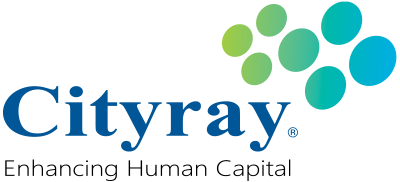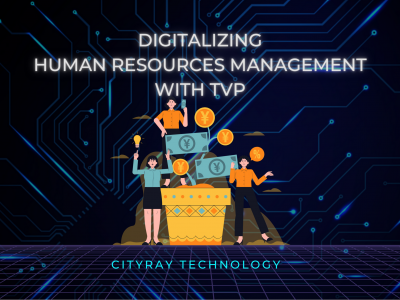Understanding Benefits & Applications of People Analytics
Discover how People Analytics leverages data to provide insights into workforce behavior & performance. Learn about the benefits of this growing field.
What Is People Analytics?
People analytics is the practice of using data and statistical analysis to gain insights into human resource (HR) management. It involves the collection, analysis, and interpretation of HR data to understand workforce trends, patterns, and behaviors. People analytics enables organizations to make data-driven decisions and optimize their HR operations.
People analytics can be used in various HR management areas, such as recruitment and retention, performance management, employee engagement, training and development, and diversity and inclusion. For example, people analytics can help organizations identify the most effective recruitment channels and methods, evaluate the impact of employee training and development programs, and identify factors that influence employee turnover.
Many companies have adopted people analytics to improve their HR operations and drive better business outcomes. For example, Google is well-known for its use of people analytics to optimize its hiring process and improve employee engagement. According to Harvard Business Review, Google’s HR team noted that people analytics has helped the company reduce employee turnover and improve diversity and inclusion.
The Process of People Analytics
To leverage the people analytics for better decision-making, there are several typical steps included:
1. Define people analytics needs and wants
The first step in the process of people analytics is to define the business problem you want to solve. This could be related to employee turnover, productivity, talent acquisition, diversity and inclusion, or any other HR-related issue that you want to address.
2. Choose the right people analytics system
Choosing the right HR management system is a crucial step in people analytics. Be reminded to look for a system that provides a comprehensive set of HR analytics tools that suits your actual business needs, including reporting, data visualization, and predictive analytics.
3. People analytics data collection and importation
Once you have chosen your HR management system, the next step is to import HR-related data into the system. This includes data on employee demographics, performance metrics, compensation, benefits, and more. Make sure that the data you import is accurate and complete, as this will form the foundation of your people analytics insights.
4. People analytics Implementation and Fine Tuning
After importing the data for people analytics, the next step is to implement and finetune your people analytics tools. This involves setting up your dashboards, reports, and data visualization tools to ensure that you are getting the most out of your people analytics. Work closely with your IT and HR teams to ensure that the implementation is smooth and that the tools are working as intended.
5. Derive people analytics insights
Finally, the most important step in people analytics is to analyze the data and gain actionable insights. This involves using your HR data to identify trends, patterns, and opportunities for improvement in your HR processes which can help you to optimize your recruitment, retention, training, and development processes, and use these insights from people analytics to make data-driven decisions that can drive business results.
By following these steps, organizations can leverage people analytics to make better HR-related decisions and drive better business outcomes. It is important to note that people analytics is an ongoing process, and organizations should continuously monitor their people analytics findings and adjust their strategies based on new insights and changing business needs.
Four Key People Analytics Trends
There are four emerging people analytics trends in today’s workplace:
1. Diversity, equity, and inclusion
Since globalization has led to greater levels of workplace diversity, many organizations are trying to create a more multifaceted and inclusive workplace culture. Therefore, more businesses are using people analytics to track and analyze the diversity metrics of the workforce, including religion, gender, age, and more, and to identify any potential gaps or areas for improvement.
2. Flexible and adaptive working
Due to the pandemic, many organizations have shifted towards a remote work model. Still, without the ability to see employees in person, it can be challenging to build a sense of teamwork and monitor productivity. People analytics is thus being used to track employee status, engagement rate, and well-being in a remote work environment so as to determine the most effective ways to manage remote teams.
3. Sensitive data handling
There have been several serious data breaches targeting businesses in recent years, which is a huge alarm for the HR teams since they are responsible for keeping the employee data such as salaries, benefits, performance evaluations, and other personal details confidential. People analytics should therefore be used to ensure compliance with data protection regulations and to enhance protection over the privacy of employee data.
4. Tasks automation
Automation refers to the use of technology to automate HR processes and reduce the need for manual intervention. With the increasing amount of HR-related data being generated from people analytics, automation can help HR professionals to manage and analyze this data more efficiently and accurately. This could involve automating the recruitment process, managing employee benefits, or streamlining payroll and other administrative tasks.
Afterall, the people analytics trend shows no sign of slowing down as organizations seek to make data-driven decisions and optimize their HR processes to drive better business outcomes. By leveraging the power of people analytics, organizations can gain insights into their workforce and make strategic decisions that improve employee engagement, retention, and productivity.
Three Key Metrics for Choosing the Right People Analytics Tools
If you are looking for some tips to choose the people analytics tool that fits you the most, below are 3 important factors to consider:
1. Know your people analytics needs
It’s essential to identify the specific HR-related problems you want to solve or the goals you want to achieve with people analytics. This will help you choose a tool that is tailored to your business needs and can provide you with relevant insights from people analytics.
2. Plan your budget and expectations
People analytics tools can range from simple to complex, with varying costs. Define your budget upfront and determine what you expect the tool to deliver. This will help you narrow down your choices and select a tool that provides the best value for your investment.
3. Partner with a trusted people analytics solution provider
Look for a vendor that has a good reputation and track record in the people analytics industry. Research their reviews, ratings, and customer feedback to understand their strengths, weaknesses, and reliability. You can also ask for recommendations from industry peers or consult with an independent consultant to guide you in the selection process.
If you are new to people analytics, you might find it difficult to get started with people analytics from scratch. Fortunately, there are some third-party software and intelligence solutions available that can help you get started with people analytics.
Founded in Hong Kong since 1987, Cityray is proficient at adapting change in the rapidly evolving business environment to strive for continuous success. To help enterprise standardizing management, Cityray has offered various people analytics and management solutions.
Let’s make people analytics simpler and easier with Cityray. Consult us now.




